Businesses are always looking for ways to improve performance and increase sales, especially in the wake of low-performing years such as 2020. Many try staff incentive programs to accomplish goals; the problem is … many of these plans fail. Avoiding some common sales incentive pitfalls can set you up to move forward instead of backward. Let’s look at some of the reasons why sales incentive programs don’t work and how you can avoid them in order to provide real incentives that motivate your sales team.
Wells Fargo: How Not to Do It
In 2016, Wells Fargo faced public embarrassment over accusations of unethical sales practices that ultimately brought them before the United States Senate. A disastrous sales incentive policy led employees to open fraudulent accounts to maintain impossible sales quotas. As a result, the bank fired thousands of employees and was fined nearly $200 million.
Strong incentive programs are essential to success. Over half of all organizations in the United States use at least one such program. They drive performance by around 22%, and nearly a third of all sales can be attributed to incentives. Wells Fargo is just a case study on how to do it wrong. You need to strike a balance between effective and ridiculous. You want a program that is strong enough to encourage staff to work as hard as they can, but not one that is so difficult to achieve it encourages unethical behavior, or worse, drives staff turnover.
Crucial (and Common) Incentive Program Errors
Here are five crucial mistakes to avoid so you don’t replicate this error:
1. Basing incentives on individual performance
2. Rewarding basic performance standards
3. Top-down proclamations
4. Lack of plan funding
5. Invisibility as opposed to transparency
1. Basing Incentives for Individuals
Base your incentive plan on team performance rather than on individual performance. Business is a team sport, and if you start playing your staff against each other, nobody wins. If, on the other hand, everyone works together, everyone wins. Even when you can track individual performance, as you can in sales, this creates an unhealthy atmosphere of envy and bitterness, and it rarely creates sustainable improvements. Basing your plan on team performance will encourage everyone to lift one another up.
2. Rewarding Basic Performance Standards
Too many companies, in an effort to avoid being too demanding or strict, offer incentives to employees who just meet the basics. Such offerings are akin to profit-sharing in the company — always a good idea, but not a reward. Your incentive plan should reward staff for going above and beyond, not for meeting expectations. Your plan needs to encourage your employees to pull together and change their outlook. It should help them develop a passion for what you do and get them to reach for the stars.
3. Top-Down Implementation
If you want to implement a sales incentive program, find out from the source what will motivate your staff. It’s all too common in companies for management to take the attitude that they know what’s best for the staff and what the staff wants (or should want). This is a critical error. It makes you seem distant and disconnected and will not generate the results you want. Talk to your employees first and listen to what they want, and when you announce the plan, they will buy in instantly. After all, they came up with it.
4. No Funding for the Plan
An employer offers a fantastic incentive plan, and everyone shoots for it. Performance improves, and everyone reaches their goals. Now it’s time to pay out the incentives, and … the company can’t afford it because funding wasn’t built into the budget. You need to incorporate a plan for funding the incentive plan itself.
Instead of going with key performance indicators or raw sales numbers, tie your incentives to financial goals. This allows you to build funding directly into the program. That way, when your team hits their target, they’ve also hit the funding benchmarks to pay for their bonuses. You might also think beyond cash, like gifts, shopping sprees, or experiences and items.
5. Invisibility, Not Transparency
Transparency is vital to your success. It means that your staff can see what you’re doing and understand why. A transparent plan is explained clearly and succinctly so your staff can instantly grasp and buy into it. They will always know where they stand, what contributes to the incentives, how they’re funded, and the metrics. This transparency extends to keeping track of progress and letting people know where they are regarding the incentive goals.
Often, management announces an incentive program with no explanation of how it will work, what the benchmarks are, or how it will be funded. Then, they disappear without ever delivering an update. Some teams may get a bonus at some point. That’s invisibility. If you’re looking for proven methods to increase your sales exponentially, Sales Arbiter will work with your sales team to make it happen. Contact us, and we’ll share how our process has worked for other teams.








